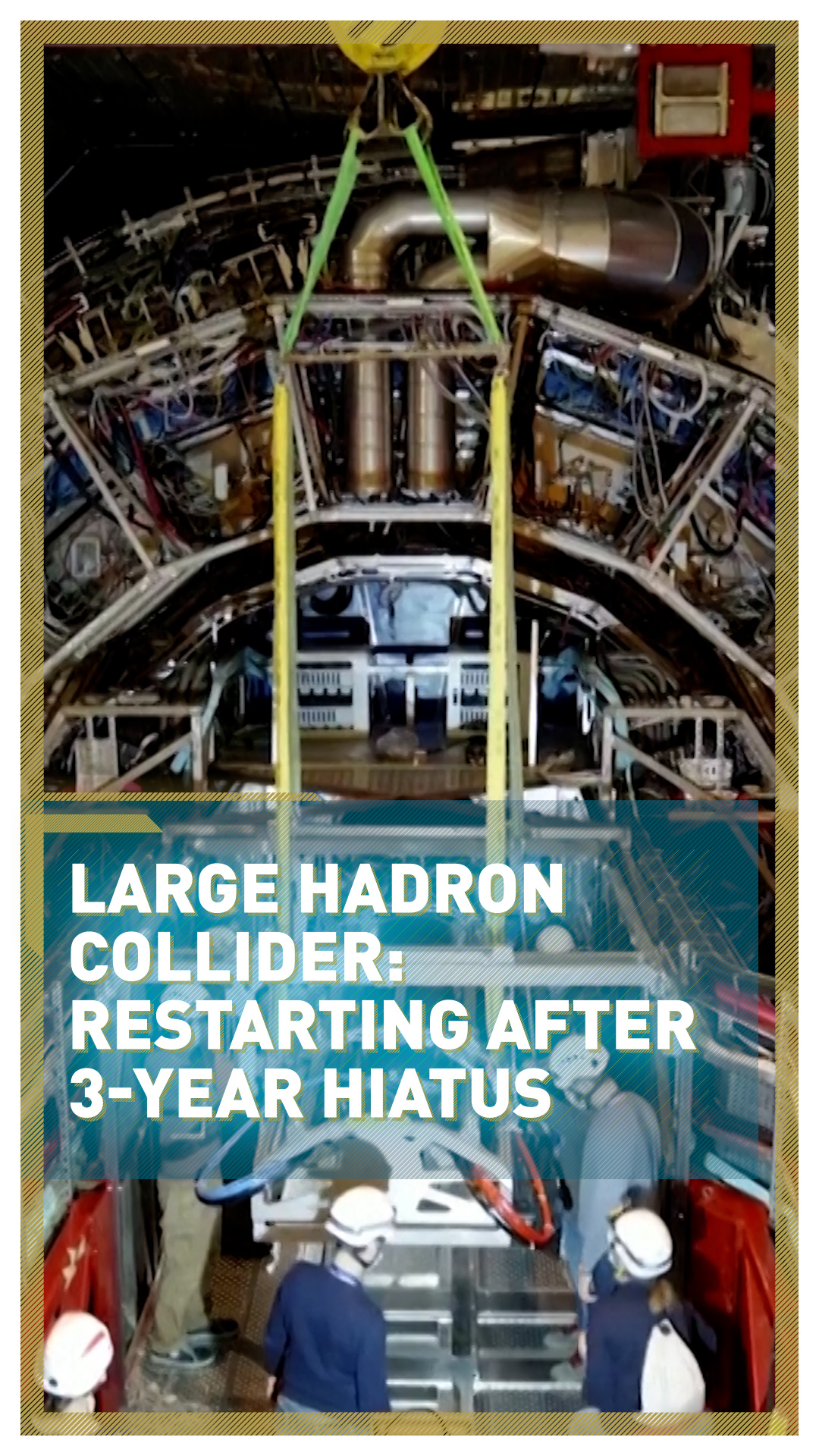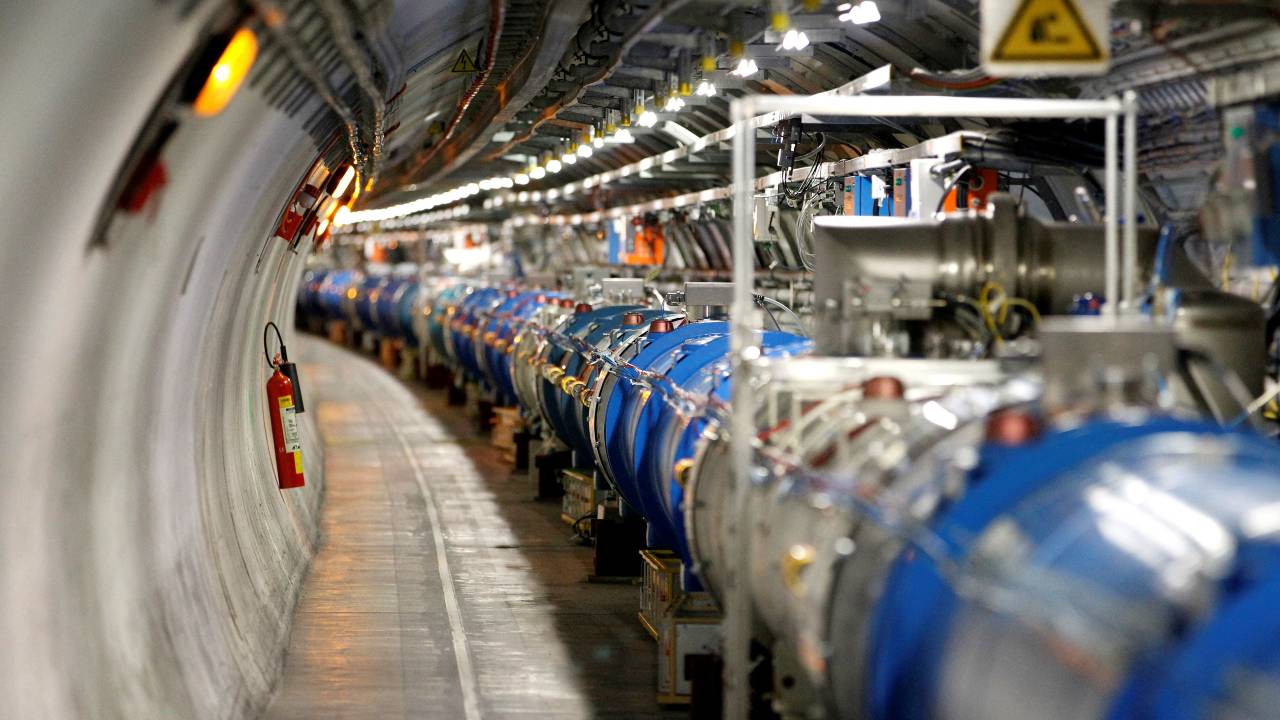00:58

Scientists at Europe's physics research center will fire up the 27-kilometer-long Large Hadron Collider (LHC) after a shutdown for maintenance and upgrades was prolonged by COVID-19 delays.
Restarting the collider is a complex procedure. Researchers at the CERN center have champagne on hand if all goes well, ready to join a row of bottles in the control room celebrating landmarks, including the discovery of the elusive Higgs boson subatomic particle a decade ago.
READ MORE
See Odesa's catacombs, ready for Russian attack
What counts as a chemical weapon?
How Zoe Reed builds bridges between cultures
"It's not flipping a button," Rende Steerenberg, in charge of control room operations, told Reuters. "This comes with a certain sense of tension, nervousness."
Potential pitfalls include the discovery of an obstruction, the shrinking of materials due to a nearly 300-degree temperature swing, and difficulties with thousands of magnets that help keep billions of particles in a tight beam as they circle the collider tunnel beneath the Swiss-French border.

A general view of the Large Hadron Collider (LHC) experiment is seen during a media visit at the Organization for Nuclear Research (CERN). /Reuters/Pierre Albouy/File Photo
A general view of the Large Hadron Collider (LHC) experiment is seen during a media visit at the Organization for Nuclear Research (CERN). /Reuters/Pierre Albouy/File Photo
Steerenberg said the system had to work "like an orchestra."
"In order for the beam to go around all these magnets have to play the right functions and the right things at the right time," he said.
The batch of LHC collisions observed at CERN between 2010-2013 proved the existence of the long-sought Higgs boson particle, which, along with its linked energy field, is thought to be vital to the formation of the universe after the Big Bang 13.7 billion years ago.
But plenty remains to be discovered.
Source(s): Reuters

